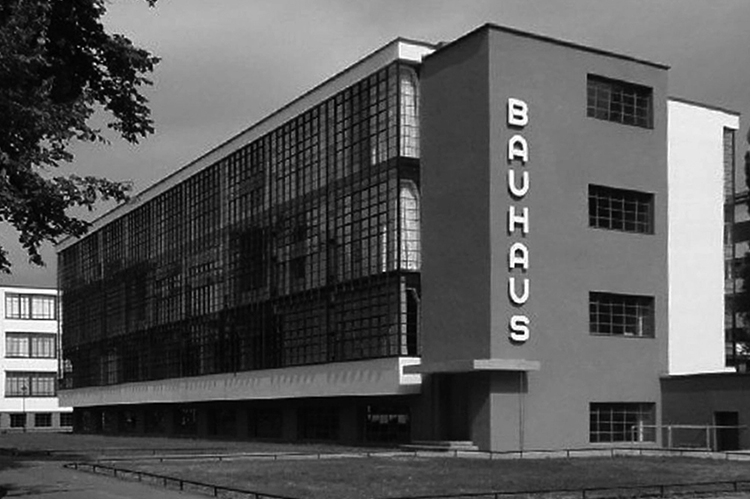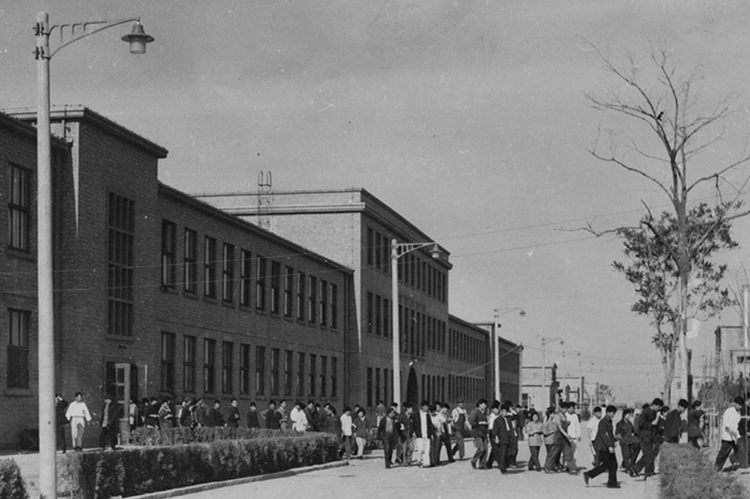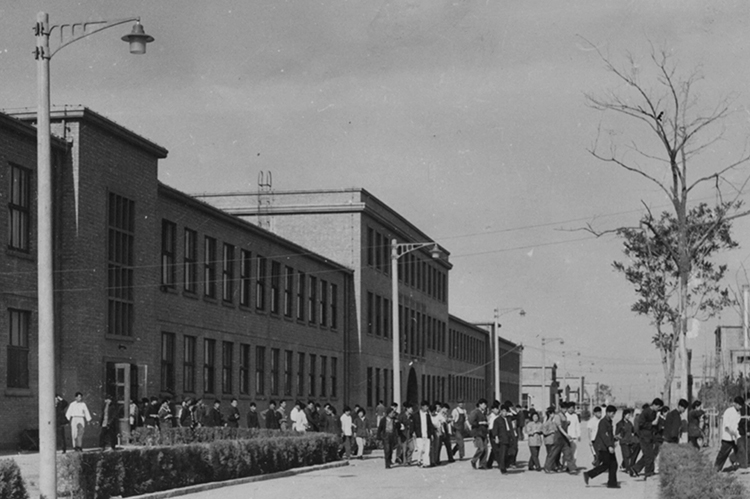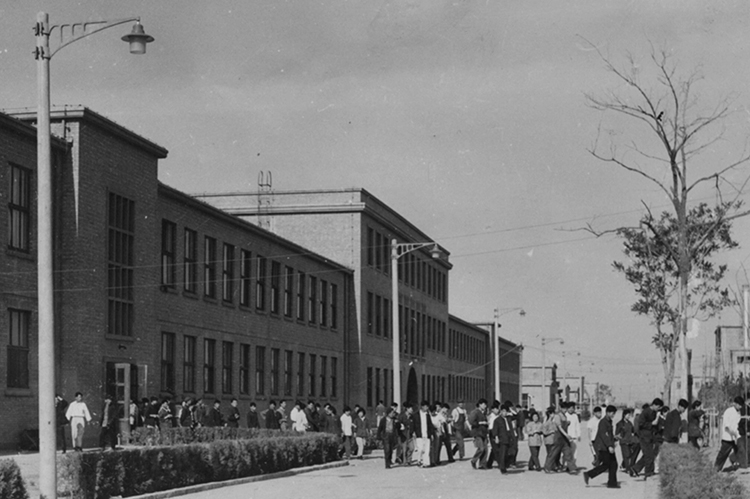

德意志制造联盟与包豪斯
Deutscher Werkbund & Bauhaus
德意志制造联盟
德意志制造联盟(Deutscher Werkbund)于1907年成立,是德国现代主义设计的基石。它在理论与实践上为20世纪20年代欧洲现代主义设计运动的兴起和发展奠定了基础。
在19世纪末期,德国的工业水平已经超越英法,居于欧洲第一位。德国在上升期不仅要求进一步工业化,而且希望成为工业时代的领袖。1907年,德国的企业家、艺术家、建筑师、设计师和技术人员组成了全国性的组织──德意志制造同盟。从1908年的491个成员国扩大到1915年的1972个成员,到1929年的近3000个成员,发展成为一个由艺术家、设计师、建筑师、工匠、教师、公关人员和实业家组成的强大联盟。
德国制造联盟是现代建筑和工业设计发展的重要组成部分,特别是在后来的包豪斯设计学院创建的基础。其最初目的是与设计专业人员建立起产品制造商的合作伙伴关系,以提高德国公司在全球市场的竞争力。德国制造联盟与其说是一场艺术运动,不如说是一场由国家赞助的整合传统工艺和工业大规模生产技术的运动,以使德国与英国和美国处于竞争地位。它的座右铭从沙发靠垫到城市建筑都表明了它的兴趣范围。
德国制造联盟致力于通过材料、设计标准化的方式,将跨行业的的资源整合起来,降低成本、提高质量和竞争力。德国制造联盟将机器设计原则提升为一种美学标准——机器美学。该标准强调功能性、使用性和标准化。
包豪斯理念
包豪斯的成立标志着现代设计教育的诞生,是世界上第一所完全为发展现代设计教育而建立的学院,对世界现代设计的发展产生了深远的影响。它所倡导的科学性设计学科教育体系、艺术追求与工业标准化结合、人在工业化大生产中的独特作用与价值等,改变了整个世界的设计审美与工业化生产。
在设计理论上,包豪斯提出了三个基本观点:①艺术与技术的新统一:②设计的目的是人而不是产品:③设计必须遵循自然与客观的法则来进行。这些观点对于工业设计的发展起到了积极的作用,使现代设计逐步由理想主义走向现实主义,即用理性的、科学的思想来代替艺术上的自我表现和浪漫主义。
结合德国制造联盟和包豪斯的设计理念,从产业角度看,包豪斯的理念是通过工业标准化的方式,实现跨行业的资源整合,为大众服务、为提高德国制造的国际竞争力服务。
在718厂建设过程中,中方决策者和德国专家的思维方式、工作作风,充分体现了以人为本,为人民服务,系统思考、科学务实的精神,这也是包豪斯精神具体体现;同时我国的技术人员和工人,在计划经济下,从系统出发,整合多方资源,走出了一条引进、学习、消化、吸收、创新的产业升级之路,为我国电子工业的发展奠定了坚实基础。
Deutscher Werkbund
Deutscher Werkbund was founded in 1907. It is the foundation of German modern design, setting up the ground work in both theory and practice that made European Modernism design movement during 1920s possible.
In the late 19th century, the industrial level of Germany overreached that of UK and French, ranking first in European countries. Moving up, Germany required further industrialization and was striving for the throne of the industrial era. In 1907, entrepreneurs, artists, architects, designers and engineers together formed a national organization——the Deutscher Werkbund. It expanded from 491 members in 1908 to 1972 members in 1915. The number reached near 3000 in 1929. Over the years it had grown to be an extremely influential coalition consisted of artists, designers, architects, craftsmen, teachers, administrators and industrialist.
Deutscher Werkbund is a major factor of modern architectures and industrial design. Particularly, it stimulated the establishment of Bauhaus. The Werkbund was initiated searching for collaboration between design experts and manufacturers with the ultimate goal to raise global competitiveness of German-based companies. It was less an artistic movement than an industrial one under national sponsorship. Through the integration of crafts and mass-production industry, Germany was playing the same game with UK and the U.S. The manifesto clearly presents its wide range of interests from sofa cushion to urban architecture.
Deutscher Werkbund focused on the integration of interdisciplinary resources through the standardization of material and design approach in order to lower the cost while increasing quality and competitiveness. It was the coalition who inculcated aesthetic value into design methodology. This unison was later known as Machine Aesthetic, which underlines functionality, practicality and standardization.
The Concept of Bauhaus
The establishment of Bauhaus was followed by the birth of modern design education. It was the first academy in the world was exclusively founded for modern design education. Its legacy still has great influence worldwide. It introduced a rational approach on design education, combing artistic and industrial value while emphasizing the humanist part in mass-production, all changed the way we evaluate design aesthetic and production method.
In terms of design theory, Bauhaus put forward three fundamental concepts:
1. Art and Technology-A New Unity
2. Design for man instead of machine
3. Nature teaches the way we should design
These ideas had positive effect on the development of design. They pushed modern design from utopia towards realism, substituting individual artistic expression and romanticism with rational and scientific set of mind.
If we compare the concept of Bauhaus with the core value of Deutscher Werkbund from a macro perspective, it seems that Bauhaus considered industrial standardization as its prerequisite of cross-industry integration, which then satisfy public demand and rasie international competitiveness.
During the construction of 718 factory, Chinese directors and German experts reached consensus in both idea and execution——care for people, serve for people, take comprehensive strategy from scientific and practical manner. The spirit of Bauhaus was manifested in our technicians and workers in China. Following the instruction of planned economy, they aggregated various resources, bringing in, absorbing and creating their own ascending path for the industry, laying down a robust foundation for the development of electronic industry in China.



